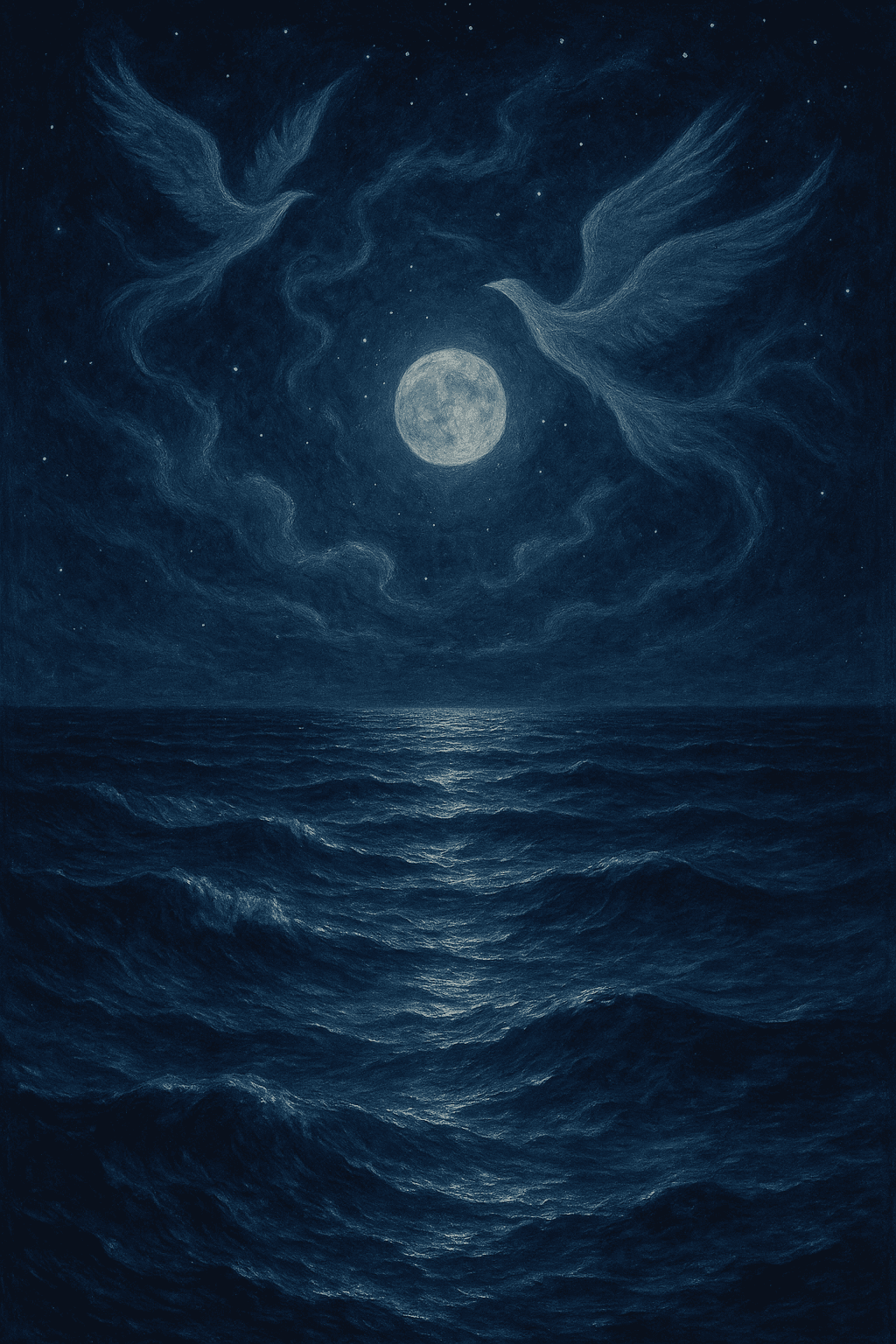Restless Nights and the Call of the Deep

In restless arms I sleepless lie — deep calls unto deep: and the night has wings. — Rumi
Rumi’s Imagery of Nighttime Restlessness
Rumi’s evocative words plunge us into the heart of sleeplessness, where one finds themselves tossing in 'restless arms,' longing for comfort or reprieve. Rather than a place of quiet, night transforms into a dynamic arena of emotion and thought. This poignant imagery invites readers to consider the night not only as a backdrop to sleep, but as a stage for the soul’s most searching questions and desires.
The Symbolism of ‘Deep Calls Unto Deep’
Transitioning from this sleepless unrest, Rumi’s phrase ‘deep calls unto deep’ taps into a profound wellspring of longing and self-exploration. The expression, echoing the psalmist’s cry in Psalm 42:7, suggests that the heart’s deepest yearnings reach out to something equally vast and mysterious in the universe. Through this, night becomes a bridge—connecting the innermost parts of the self with the boundless cosmos.
Night as a Time for Inner Dialogue
Alongside this imagery, night earns its reputation as the fertile soil for inner dialogue. While daily distractions recede, Rumi’s poetic soul listens to the silent conversations between his own depths and the universe’s mysteries. This moment of stillness can be unsettling yet transformative, echoing the insights of mystics and poets like Emily Dickinson, who wrote, ‘The soul should always stand ajar, ready to welcome the ecstatic experience.’
The Flight of Night’s Wings
Building on the motif of movement, Rumi describes the night as having wings, suggesting a time that is both fleeting and filled with unseen journeys. The wings symbolize the night’s ability to carry us through shadowy thoughts and dreams, inviting us to trust the process of spiritual travel. This imagery harmonizes with Sufism’s descriptions of the soul’s nocturnal ascent, as seen in the works of Ibn Arabi, who championed the night as a time of divine encounter.
Unity, Yearning, and Mystical Transformation
Ultimately, these interconnected motifs highlight a journey from restlessness toward wholeness. Rumi’s sleepless night, buoyed by yearning and inner dialogue, transforms from torment into an opportunity for mystical union. As the night takes flight, the soul itself is lifted—testifying, as Rumi often does, to the paradox that true peace is often born in the midst of longing, and that every sleepless hour is an invitation to deeper love and self-realization.